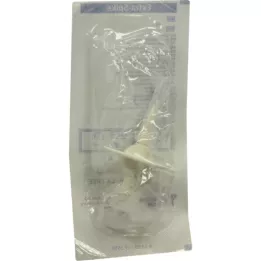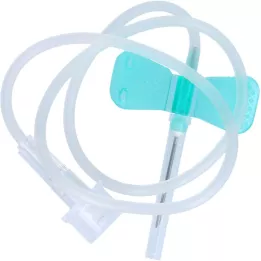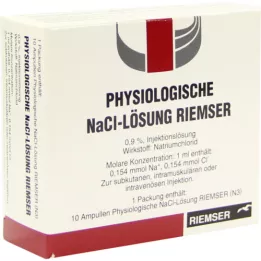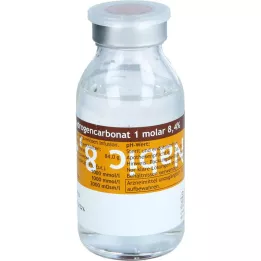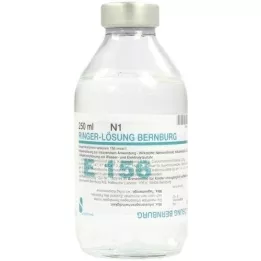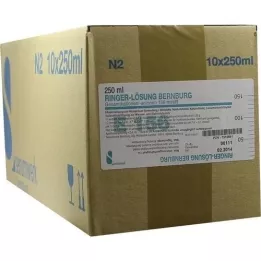
Glucose 5% Serag Plastic, 10x250 ml
Glucose 5% Serag Plastic
Manufacturers: SERAG-WIESSNER GmbH & Co.KG
PZN: 01433741
Dosage: Injektionsflaschen
Content: 10X250 ml
Reward Points: 245
Availability: Out of stock
$44.51
from German pharmacies to your address

Instructions for use for Glucose 5% Serag Plastic, 10x250 ml
Instructions for use for: Glucose 5% Serag Plastic, 10x250 ml
Serag-Wiessner KG
To backstop 8-12
95119 Naila
Glucose solution 5%, 10%, 20%, 40% and 50%
1. Identification of Medicines
5% glucose solution%
10% glucose solution%
20% glucose solution%
Glucose solution 40%
50% glucose solution%
2. composition
Active pharmaceutical ingredients:
5% glucose solution%
1000 ml of infusion solution contains:
Glucose monohydrate (Ph.Eur.) 55.0 g
10% glucose solution%
1000 ml of infusion solution contains:
Glucose monohydrate (Ph.Eur.) 110.0 g
20% glucose solution%
1000 ml of infusion solution contains:
Glucose monohydrate (Ph.Eur.) 220.0 g
Glucose solution 40%
1000 ml of infusion solution contains:
Glucose monohydrate (Ph.Eur.) 440.0 g
50% glucose solution%
1000 ml of infusion solution contains:
Glucose monohydrate (Ph.Eur.) 550.0 g
Other ingredients:
Water for injection purposes
pH 3.2 to 6.5
Glucose solution 5%:
Carbohydrate 50 g / l
Theoretical osmolarity 278 mOsm / l
Energy content of 850 kJ / l (200 kcal / l)
Glucose solution 10%:
Carbohydrates 100 g / l
Theoretical osmolarity 555 mOsm / l
Energy content 1700 kJ / l (400 kcal / l)
Glucose solution 20%:
Carbohydrates 200 g / l
Theoretical osmolarity 1110 mosm / l
Energy content 3400 kJ / l (800 kcal / l)
Glucose solution 40%:
Carbohydrates 400 g / l
Theoretical osmolarity 2220 mosm / l
Energy content 6800 kJ / l (1600 kcal / l)
Glucose solution 50%:
Carbohydrates 500 g / l
Theoretical osmolarity 2775 mosm / l
Energy content 8500 kJ / l (2000 kcal / l)
3. Dosage form and content
Dosage form: infusion solution
Content of a glass or plastic bottle: 250 ml, 500 ml, 1000 ml
4. Material or indication group or mode of action
Electrolyte-free carbohydrate solution
5. Pharmaceutical entrepreneur and manufacturer
Serag-Wiessner KG
For ball catch 8 - 12
95119 Naila
Telephone (0 92 82) 93 70
Fax (0 92 82) 937 93 69
6. Applications
Glucose solution 5%:
- Carrier solution for compatible electrolytic concentrates and drugs
- Feed free water
Glucose solution 10%:
- Glucose supply for energy supply
- Hypoglycemic states
- Carrier solution for compatible electrolytic concentrates and drugs
Glucose solution 20%:
- Glucose supply for energy supply
- Hypoglycemic states
- Carbohydrate component in the parenteral nutrition
Glucose solution 40% and 50%:
- Glucose supply for energy supply
- High caloric calorie intake in indications for fluid restriction
- Hypoglycemic states
- Carbohydrate component in the parenteral nutrition
7. Contraindications
Glucose infusion solutions may not be used at
- Increased blood sugar levels, the use of more than 6 Units of insulin / hour required
- Reduced potassium content of blood (hypocalemia, without simultaneous electrolyte substitution)
- metabolic oxygenation of the blood (azidose), Especially with reduced perfusion and insufficient oxygen offer
From the fluid intake associated with the glucose supply
can result in further contractions. Which includes:
- Abwassment (hyperhydration states)
- Hypotone dehydration.
Glucose solution 10%, 20%, 40%, 50%:
Caution is required for increased serumosmolarity, especially when used highly concentrated solutions and speedy infusion speed.
Use in pregnancy and lactation:
For an application in pregnancy and lactation, there are no concerns with appropriate indication.
8. Precautions for the application and warnings
Since glucose-containing infusion solutions are often used in stress metabolism situations (postaginagation metabolism) with known limited glucose recycling are - depending on the metabolic state and applied amount - Common controls of the blood-
Glucose concentration necessary. In addition, due to mutual influence, if necessary controls of liquid, Electrolyte and acid-based status required.
Glucose solutionn may not be administered in the same system such as blood preserves, as this can lead to a pseudoagglutination.
Due to the energy content when applying a potassium-free solution, a regular control of the potassium mirror is recommended.
Glucose solution 20%, 40%, 50%:
It should be noted that the predetermined solution is only a block for the parenteral diet. For a complete parenteral nutrition, the simultaneous substitution with protein blocks, electrolytes, essential fatty acids, vitamins and trace elements is required.
9. Interactions with other means
When mixing with other medicaments, the acidic pH value of the glucose solution may, et al. Lead to precipitations in the mixture.
Erythrocyte concentrates must not be reinforced in glucose solutions, as this can lead to a pseudoagglutination.
10. Warnings
See point 8.
11. Dosage instructions, type and duration of the application
The dosage depends on the need for glucose and liquid.
Adult:
A total fluid intake of 40 ml / kg body weight and day should be exceeded in adults as part of a parenteral diet only in exceptional cases. For the dosage of glucose, the following guidelines apply: up to 0.25 g of glucose / kg bw / hour and up to 6 g of glucose / kg bw / day.
Glucose solution 5%
Maximum infusion speed:
Up to 5 ml of infusion solution (according to 0.25 g of glucose) / kg bw / hour
Maximum daily dose:
Up to 40 ml of infusion solution (according to 2 g of glucose) / kg body weight
Glucose solution 10%
Maximum infusion speed:
Up to 2.5 ml infusion solution (according to 0.25 g of glucose) / kg bw / hour
Maximum daily dose:
Up to 40 ml of infusion solution (according to 4 g of glucose) / kg kg
Glucose solution 20%
Maximum infusion speed:
Up to 1.25 ml of infusion solution (according to 0.25 g of glucose) / kg bw / hour
Maximum daily dose:
Up to 30 ml of infusion solution (according to 6 g of glucose) / kg body weight
Glucose solution 40%
Maximum infusion speed:
Up to 0.625 ml of infusion solution (according to 0.25 g of glucose) / kg bw / hour
Maximum daily dose:
Up to 15 ml of infusion solution (according to 6 g of glucose) / kg body weight
Glucose solution 50%
Maximum infusion speed:
Up to 0.5 ml of infusion solution (according to 0.25 g of glucose) / kg bw / hour
Maximum daily dose:
Up to 12 ml of infusion solution (according to 6 g of glucose) / kg kg
Under changed metabolic conditions (eg Postag inhibitor change, hypoxic conditions, organ insufficiency) can be restricted to oxidative metabolism. Therefore, the supply is possibly to 3 g
Limit glucose / kg bw / day.
Children:
The therapy should only be used using glucose solution 20%, 40% or 50.
The maximum daily dose for glucose is:
Earlyborn
Glucose solution 20%
Up to 18 g / kg body weight and day, according to 90 ml / kg body weight and day
Glucose solution 40%
Up to 18 g / kg body weight and day, according to 45 ml / kg body weight and day
Glucose solution 50%
Up to 18 g / kg body weight and day, according to 36 ml / kg body weight and day
Newborn
Glucose solution 20%
Up to 15 g / kg body weight and day, according to 75 ml / kg body weight and day
Glucose solution 40%
Up to 15 g / kg body weight and day, according to 37.5 ml / kg body weight and day
Glucose solution 50%
Up to 15 g / kg body weight and day, according to 30 ml / kg body weight and day
1.-2. age
Glucose solution 20%
Up to 15 g / kg body weight and day, according to 75 ml / kg body weight and day
Glucose solution 40%
Up to 15 g / kg body weight and day, according to 37.5 ml / kg body weight and day
Glucose solution 50%
Up to 15 g / kg body weight and day, according to 30 ml / kg body weight and day
3.-5. age
Glucose solution 20%
Up to 12 g / kg body weight and day, according to 60 ml / kg body weight and day
Glucose solution 40%
Up to 12 g / kg body weight and day, according to 30 ml / kg body weight and day
Glucose solution 50%
Up to 12 g / kg body weight and day, according to 24 ml / kg body weight and day
6.-10. age
Glucose solution 20%
Up to 10 g / kg body weight and day, equivalent to 50 ml / kg body weight and day
Glucose solution 40%
Up to 10 g / kg body weight and day, according to 25 ml / kg body weight and day
Glucose solution 50%
Up to 10 g / kg body weight and day, according to 20 ml / kg body weight and day
10.-14. age
Glucose solution 20%
Up to 8 g / kg body weight and day, correspond to 40 ml / kg body weight and day
Glucose solution 40%
Up to 8 g / kg body weight and day, enor. 20 ml / kg body weight and day
Glucose solution 50%
Up to 8 g / kg body weight and day, according to 16 ml / kg body weight and day
When dose resistant, it should be noted that the following guidelines for the total fluid intake of all applicable infusion solutions must not be exceeded. The volume requirement (basic requirement) is:
1st day of life 50 - 70 ml / kg body weight and day
2. Life Day 70 - 90 ml / kg body weight and day
3. Life day 80 - 100 ml / kg body weight and day
4th day of life 100 - 120 ml / kg body weight and day
from 5th day of life 100 - 130 ml / kg body weight and day
1. Year of age 100 - 140 ml / kg body weight and day
2nd year of age 80 - 120 ml / kg body weight and day
3.-5. Year of age 80 - 100 ml / kg body weight and day
6.-10. Year of age 60 - 80 ml / kg body weight and day
10.-14. Year of age 50 - 70 ml / kg body weight and day
type of application
Glucose solution 5% and 10%:
For intravenous infusion.
Glucose solution 20%, 40% and 50%:
For central venous infusion (Cava catheter).
Duration of the application
The doctor decides on the duration of the application.
12. overdose
Overdose can lead to hyperglycemia, glucosuria, hyperosmolarity, hyperglycemic, hyperosmolar coma, oversters and electrolyte disorders. The primary therapy of the disturbances is a re-reduction of the glucose supply. Disorders of the carbohydrate metabolism and
The electrolyte household can be treated with insulings and electrolyte supply.
A glucose inlerance (diabetes mellitus, post-assembly fabric change) may result in glucose infusion to hyperglycaemia to the hyperosmolar coma, which has a high lethality.
The older the patient is and the heavier the disease or a trauma, the more often it comes within the framework of the post-aggression metabolism into a glucose inlerance, especially if there is also a hitherto not recognized diabetes mellitus.
In the case of already known diabetes Mellitus, a careful coordination with the most required insulin therapy must be made. The use of insulin therapy, especially during post-assembly metabolism, includes the risk of serious hypoglycaemias, since often changing blood glucose concentrations occur due to existing regulatory disorder. Strong control of the blood glucose concentration is therefore required.
13. Side effects
In compliance with the contractions, dosage recommendations and notes, side effects are not to be expected.
If you are watching side effects, share them with your doctor or pharmacist.
14. Notes and information on durability
Glucose solution 40% and glucose solution 50%:
Protected in front of light, do not store over + 25 ° C.
After the expiry of the expiry date specified on the container and the external wrapper, use no longer!
Keep medicines inaccessible to children!
Use immediately after breakdown of the container!
Only use clear solutions in intact containers.
15. Status of Information: June 2005
Source: www. serag-wiessner. de
For risks and side effects, read the package leaflet and ask your doctor or pharmacist.
Medicines Reviews
There are no reviews for this product.
Write a review
Popular in Infusions
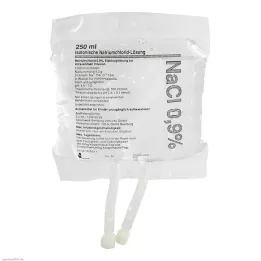
ISOTONISCHE Sodium chloride solution infusion bag, 250 ml
ISOTONISCHE Natriumchlorid-Lösung Infusionsbeutel
$11.56

